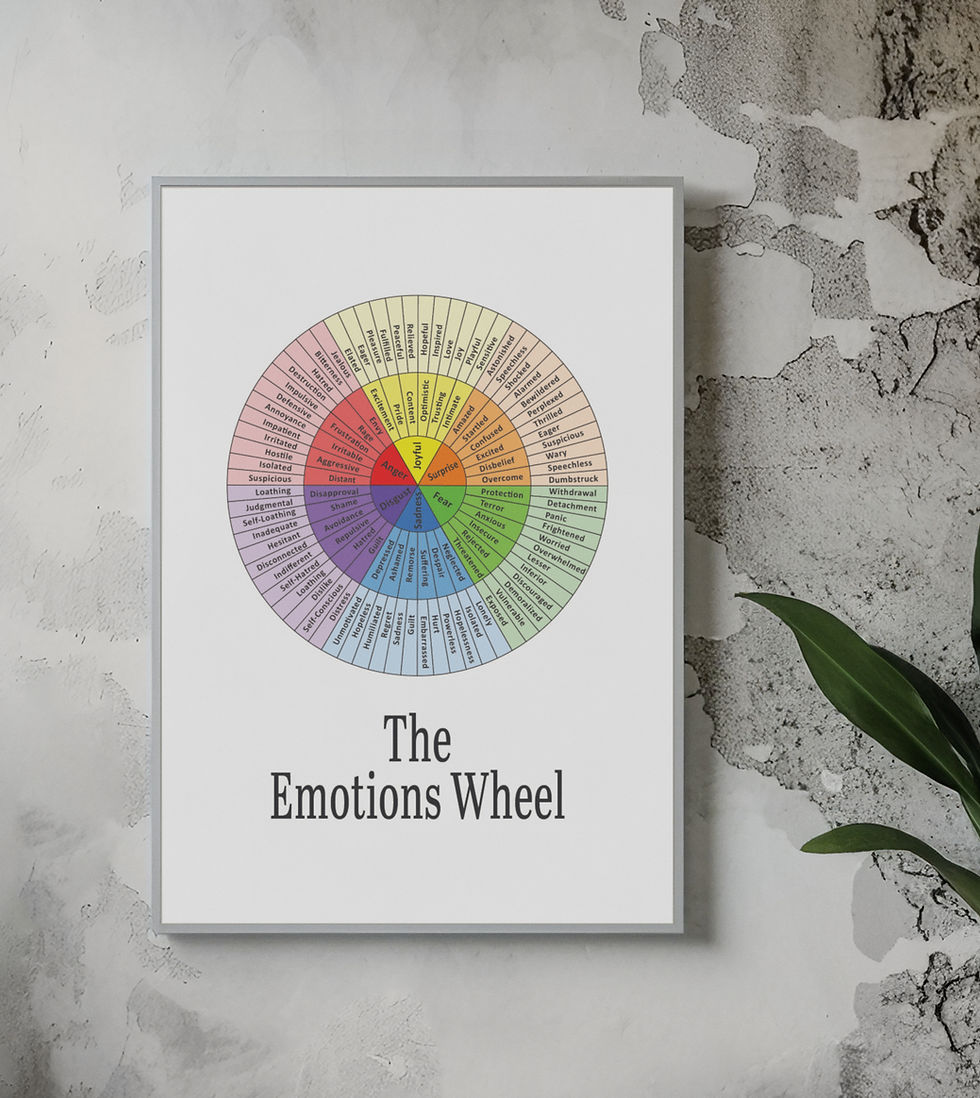Daily Emotional Check-In Guide: A Simple Path to Mindful Self-Care
- Megan Brewer
- Oct 30, 2024
- 4 min read
Updated: Dec 27, 2024

In our fast-paced world we live in today, it’s easy to lose touch with how we’re feeling. Emotions can build up, go unrecognized, or even overwhelm us if left unaddressed. That’s where a Daily Emotional Check-In can make all the difference.
It’s a quick, mindful practice to ground yourself, reflect on your emotions, and better understand what you need to feel balanced. Whether you’re feeling calm, stressed, joyful, or anxious, taking just a few minutes each day to check in can set a positive tone for the rest of your day, weeks and years to come. Here’s a simple guide to get started.
1. Pause + Breathe
Start your emotional check-in by grounding yourself. Take a deep breath in, hold for a moment, and release. Repeat this a few times, allowing your body to relax and your mind to focus on the present. Breathing exercises are powerful because they help center your thoughts and calm your nervous system, making it easier to access your true feelings.
Quick Tip: Imagine each breath as a wave, washing over you and bringing you back to the present moment. Let go of distractions and tune into yourself.
2. Identify Your Emotion
Now, ask yourself, “What am I feeling right now?” Try to pinpoint your main emotion without judgment. Emotions can be complex, so give yourself a moment to find the right word. It might be joy, sadness, frustration, anxiety, or calm.
Examples: You might realize you feel anxious about an upcoming deadline, joyful after spending time with loved ones, or a little overwhelmed from a busy day.
Mindful Reminder: There are no “wrong” emotions. Allow yourself to feel what’s present without trying to change it.
3. Acknowledge the Feeling
Accept that it’s okay to feel this way. Emotions are natural, and they’re here to guide you. By acknowledging your feelings, you’re giving them the validation they deserve. This step is crucial because it helps prevent suppression and promotes self-acceptance.
Reflection: Think about how this emotion is affecting your day. Are you holding tension in your shoulders from stress? Or do you feel light and energized from happiness? Recognizing your body’s response to emotion can bring deeper understanding.
4. Recognize Your Need
Once you’ve identified and acknowledged your emotion, take a moment to ask yourself what you might need. Emotions are often signals that point toward unmet needs. If you’re feeling stressed, you may need rest or relaxation. If you’re feeling disconnected, you might need some quality time with a friend or family member.
Recognition Prompt: What is my emotion trying to tell me? Do I need support, focus, joy, or a moment to rest?
Examples:
Anxiety may mean you need grounding or a small plan of action.
Joy might encourage you to share the moment with others.
Sadness could signal the need for comfort or connection.
Check out our Emotions Wheel Poster.
This feelings wheel poster is perfect to help recognize the emotions and needs you may be experiencing.
5. Take a Small Action
The final step is to choose one small action that supports your need. It doesn’t have to be complicated or time-consuming; even a few minutes can make a difference. Here are a few ideas based on common needs:
If You Need Rest: Take a short break, go for a walk, or meditate.
If You Need Connection: Call or text a friend, spend time with family, or simply express gratitude.
If You Need Focus: Create a quick to-do list, organize your space, or practice a breathing exercise.
Reminder: This action doesn’t have to “fix” your emotion; it’s simply a small step toward honoring it.

Incorporating the Daily Emotional Check-In into Your Routine
Making this check-in a daily habit can be transformative for emotional health and well-being. Over time, you’ll likely notice patterns and develop a better understanding of your emotional landscape with pride. You may even find that you become more resilient, as checking in helps you approach emotions with mindfulness and compassion.
Remember: Emotions are a part of the human experience, and each one serves a purpose. Regularly recognizing and honoring your feelings brings balance, clarity, and self-compassion. Save this guide as a gentle reminder to include emotional check-ins in your self-care routine.
Why a Daily Emotional Check-In Matters
Engaging in a daily emotional check-in offers many benefits, including:
Enhanced Self-Awareness: Knowing your emotional state helps you respond rather than react.
Improved Mental Health: Checking in allows you to address emotions before they build up.
Better Relationships: Understanding your needs can improve communication and empathy with others.
Increased Resilience: Recognizing emotions and needs helps you navigate life’s ups and downs more effectively.
Take a moment for yourself today.
Try this simple guide, and let it bring you closer to a state of mindfulness, clarity, and self-love. A few minutes each day can go a long way in supporting your emotional well-being.


Comments